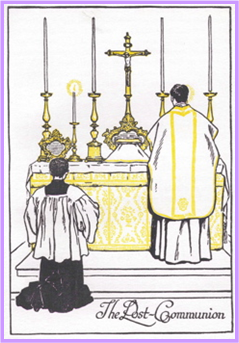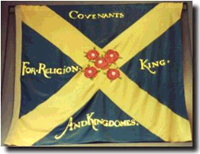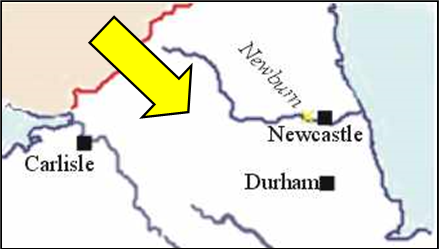


xxxxxAs we have seen, Charles ruled alone as from 1629, but in 1637 he ran into serious trouble with the Scots by trying to impose upon them the rules of the Church of England -
THE BISHOPS' WARS 1639 -
Acknowledgement
Post-
 xxxxxAs we have seen (1629), Charles' attempt to rule alone was successful for some eleven years, despite widespread opposition at times to his heavy and unconventional forms of taxation. In 1637, however, he ran into serious trouble with the Scots when he decided to impose the English liturgy (set of Church rules) upon his northern kingdom. His wife, Henrietta Maria, was a Roman Catholic -
xxxxxAs we have seen (1629), Charles' attempt to rule alone was successful for some eleven years, despite widespread opposition at times to his heavy and unconventional forms of taxation. In 1637, however, he ran into serious trouble with the Scots when he decided to impose the English liturgy (set of Church rules) upon his northern kingdom. His wife, Henrietta Maria, was a Roman Catholic -
xxxxxOn the other hand, since the English Reformation, and particularly in the reigns of Elizabeth I and James I, the Puritans (Presbyterians in Scotland) had long argued that the religious reforms had not gone far enough to rid the country of all vestige of the Roman Catholic Church. And a particularly hot potato in this respect was the continued existence of bishops in the government of the church (known as episcopacy). This above all smacked of Roman Catholicism. When in 1637 Charles, aided and abetted by his chief advisor the Earl of Strafford, tried to make the Scots conform to English church practice, it is hardly surprising that they rose up in revolt. It was an uprising which, in fact, was to bring about the English Civil War. By 1639 the king had raised a force of sorts and set out for the north. On reaching York, however, short of funds and not a little apprehensive about the quality of his soldiers, he decided that judgement was the better part of valour and negotiated a peace settlement, signed at Berwick-
 xxxxxThis truce brought an end to the first of the Bishops' Wars, but it was at this crucial point that Charles, desperate for money, decided to recall parliament, thus ending his eleven years of personal rule. This “Short Parliament”, as it was later tagged, summoned in April 1640, didn't last long. Not surprisingly, its members insisted on airing their grievances against the Crown before giving him any financial assistance. As a result Charles dismissed it the following month. But by now the Scottish Presbyterians had reopened their campaign (the second of the Bishops' Wars) and, having signed a Covenant promising never to accept bishops in their church, the "Covenanters", as they came to be called, invad
xxxxxThis truce brought an end to the first of the Bishops' Wars, but it was at this crucial point that Charles, desperate for money, decided to recall parliament, thus ending his eleven years of personal rule. This “Short Parliament”, as it was later tagged, summoned in April 1640, didn't last long. Not surprisingly, its members insisted on airing their grievances against the Crown before giving him any financial assistance. As a result Charles dismissed it the following month. But by now the Scottish Presbyterians had reopened their campaign (the second of the Bishops' Wars) and, having signed a Covenant promising never to accept bishops in their church, the "Covenanters", as they came to be called, invad ed England and, defeating a force led by the Earl of Strafford, successfully occupied the counties of Northumberland and Durham. Now in even worse straits, the king, having agreed to make a money settlement with the Scots, had no alternative but to call another assembly. This “Long Parliament”, as we shall see (1640), was even more determined to assert its authority. The stage was set for a showdown in which neither the Commons nor the King were likely to give way.
ed England and, defeating a force led by the Earl of Strafford, successfully occupied the counties of Northumberland and Durham. Now in even worse straits, the king, having agreed to make a money settlement with the Scots, had no alternative but to call another assembly. This “Long Parliament”, as we shall see (1640), was even more determined to assert its authority. The stage was set for a showdown in which neither the Commons nor the King were likely to give way.
C1-


